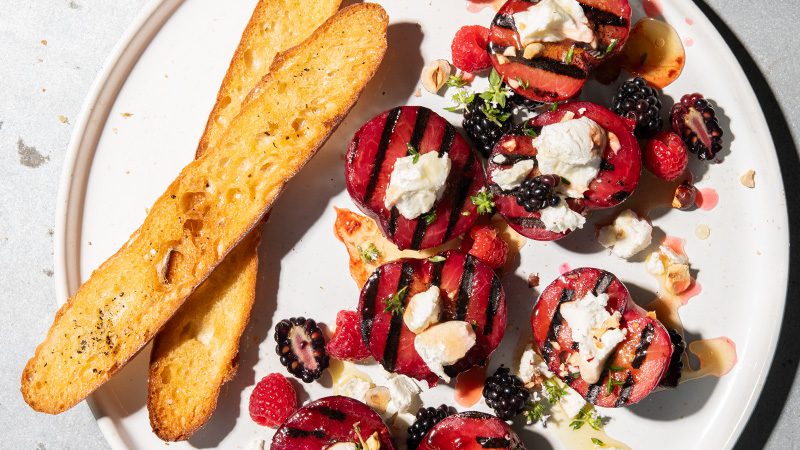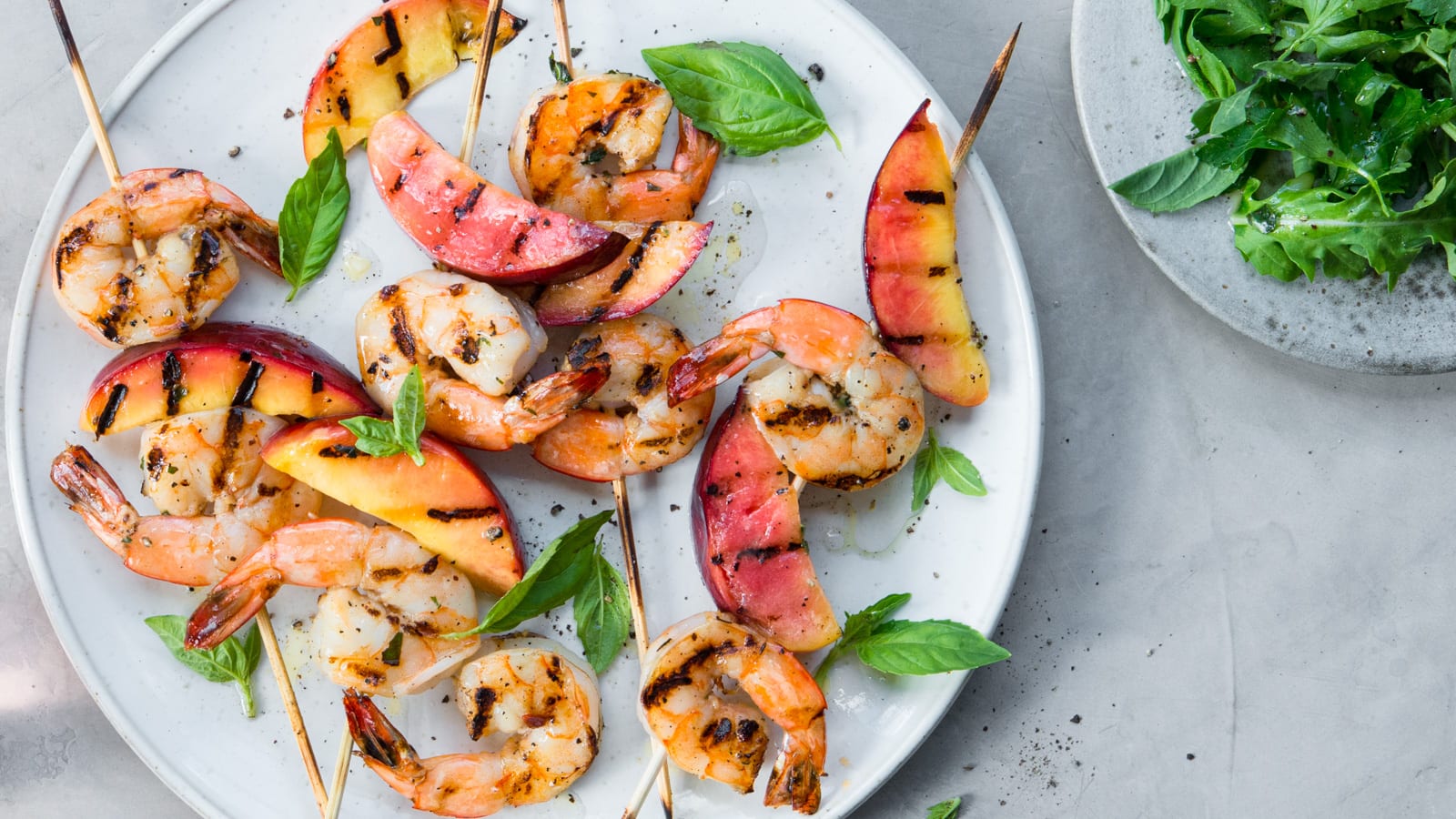How to grill fruit (and why you should!)
By Arianna Garella
This article was originally published in July 2024

Grilling fruit is easy and delicious; it enhances the fruit’s natural flavors and adds more versatile options for both sweet and savory meals. From grilled peaches and pluots to grilled bananas and melons, try these grilling tips from the PCC Cooking Classes Team.
- Choose the best fruits to grill: Most fruits lend themselves to grilling — but stone fruits (e.g. plums, peaches, or nectarines), pineapple, bananas, and melons lend themselves particularly well to the grill. We don’t advise grilling smaller fruits or berries.
- Choose underripe fruits: The best fruits to grill are those that are still a bit too firm to eat. Overripe fruit will get too soft on the grill and may fall through the grates, but underripe fruits will stay firm enough to remain on the grill and will get sweeter as they cook.
- Aim big, not small: Grill fruit in larger pieces so it doesn’t fall through the grates of your grill as it softens. If you can’t avoid smaller slices or chunks of fruit, consider putting a metal cooling rack on top your grill grates and grilling the fruit on top of it.
- Add fat: Lightly brush or spray your fruit with a bit of olive oil or clarified butter to prevent it from sticking to your grill.
- Watch for burning: The sugars in fruit can caramelize quickly, so start on a high heat to get those coveted grill marks and then move the fruit to a lower heat to finish cooking.
- Be creative, go savory! For savory applications, add grilled fruit to summer salads, grain bowls, or panzanella’s. Grilled stone fruit makes a great accompaniment to grilled meat and fish. Make an easy salsa by chopping the grilled fruit and adding some minced onion and cilantro. Don’t be afraid to treat grilled fruit like a vegetable; you can make a wonderful side dish by sprinkling it with a bit of salt, a drizzle of vinegar, and chopped herbs.

Grilled Fruit Recipes
Try these PCC fruit recipes for great grilling:
